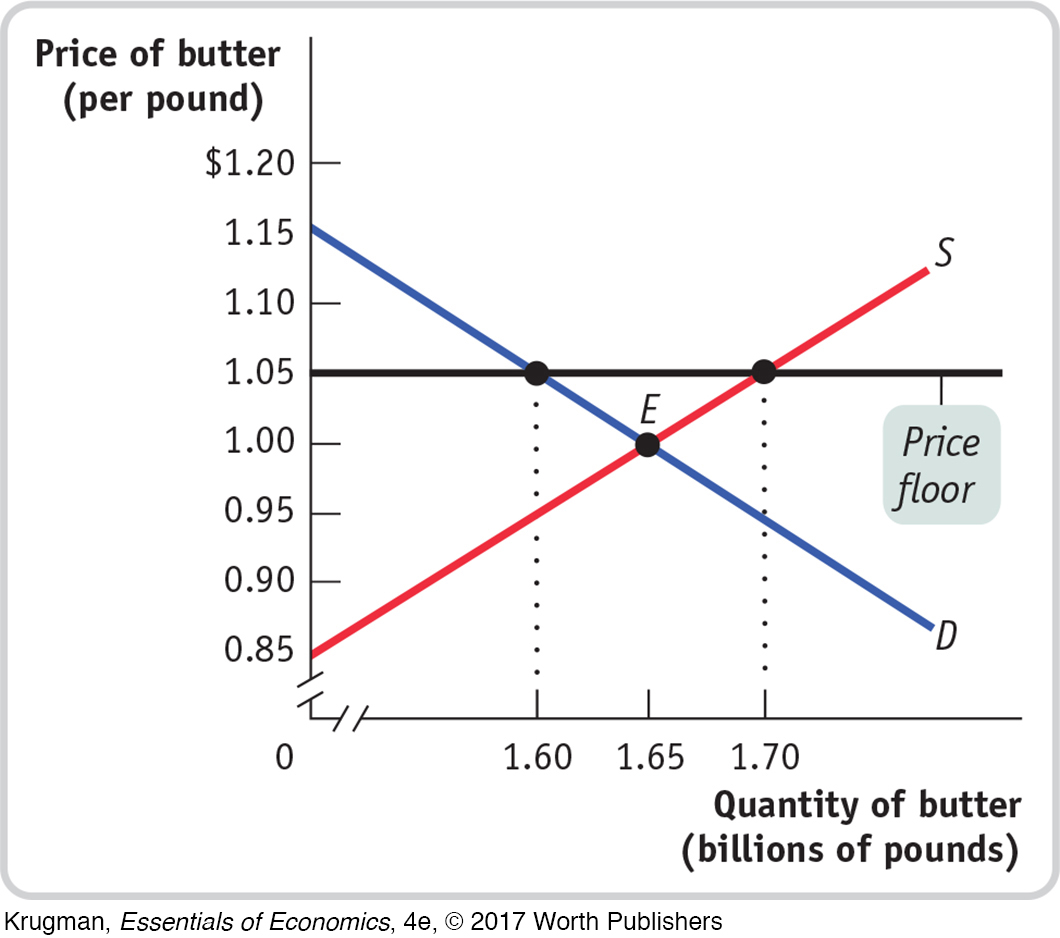Question 4.20
12. The U.S. Department of Agriculture (USDA) administers the price floor for butter, which the 2008 Farm Bill set at $1.05 per pound. At that price, according to data from the USDA, the quantity of butter supplied in 2010 was 1.7 billion pounds, and the quantity demanded was 1.6 billion pounds. To support the price of butter at the price floor, the USDA therefore had to buy up 100 million pounds of butter. The accompanying diagram shows supply and demand curves illustrating the market for butter.

In the absence of a price floor, how much consumer surplus is created? How much producer surplus? What is the total surplus?
With the price floor at $1.05 per pound of butter, consumers buy 1.6 billion pounds of butter. How much consumer surplus is created now?
With the price floor at $1.05 per pound of butter, producers sell 1.7 billion pounds of butter (some to consumers and some to the USDA). How much producer surplus is created now?
135
How much money does the USDA spend on buying up surplus butter?
Taxes must be collected to pay for the purchases of surplus butter by the USDA. As a result, total surplus (producer plus consumer) is reduced by the amount the USDA spent on buying surplus butter. Using your answers for parts b–d, what is the total surplus when there is a price floor? How does this compare to the total surplus without a price floor from part a?